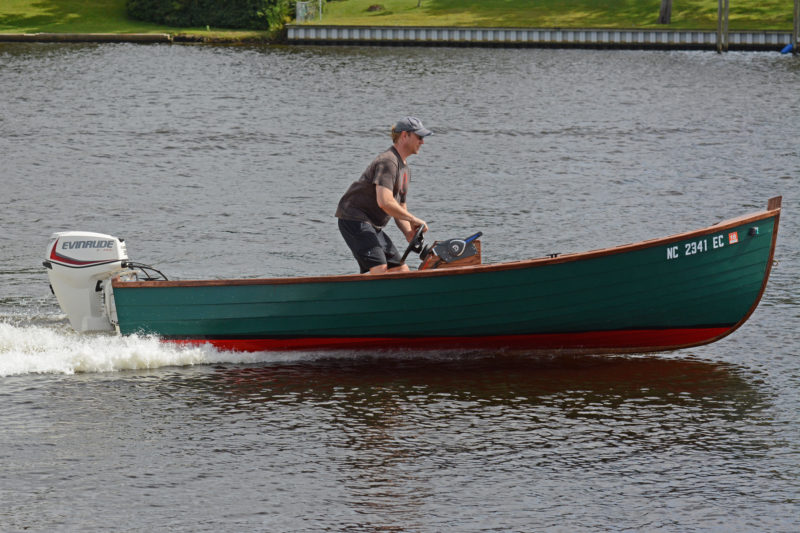 Photos by Mark Shields
Photos by Mark ShieldsThe skiff’s concave run is as effective as trim tabs in keeping the bow down at speed.
James Boyce has been a professor of biology at Coastal Carolina Community College in Jacksonville, North Carolina, for the past 42 years, but he grew up fishing and has kept at it his whole life. From the very start, boatbuilding has been intertwined with fishing. He was raised in Gastonia, North Carolina, and when he was in the seventh grade his family moved to a 130-acre farm that had a 6-acre farm pond. He and his father built two plywood 10′ rowboats for fishing. “For the next five years, while going to high school, I would come home in the afternoon and either go hunting, plinking with my .22 rifle, or get out the bamboo fly rods and go fishing for a few hours on the pond. One of the great pleasures was to catch a 3/4-lb bluegill on a light bamboo fly rod. What a fight!” James later built a vinyl-skinned kayak from a Folbot kit.
Married and with a young family of his own, he built a flat-bottomed Carolina skiff, a boat he used for years but never cared much for: “I finally sold it to a fisherman who used it for about another 10 years, and then I lost track of it.” In the past decade James built an Arch Davis Penobscot 14, a Simmons Sea Skiff, a strip kayak, and, along with a friend, a 21′ stitch-and-glue rowing shell.
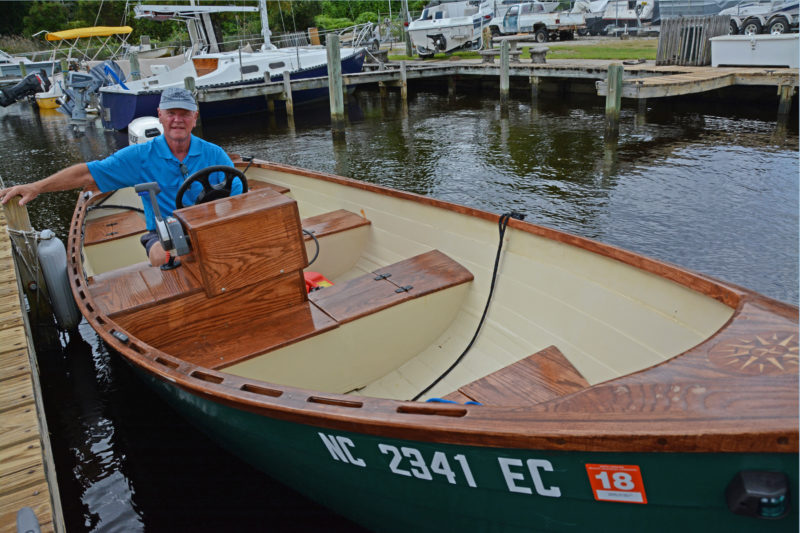
Bulkheads under the seats enclose storage compartments and serve as framing to reinforce the glued-lap plywood construction.
The Jericho Bay Lobster Skiff is his most recent build. The 15′6″ skiff was originally designed by Joel White and named for a bay within sight of the WoodenBoat offices in Brooklin, Maine. Renowned peapod builder Jimmy Steele built two of the first boats, carvel-planked, cedar on oak. Tom Hill adapted the design for strip-building and detailed the construction in WoodenBoat (September/October and November/ December 2009).
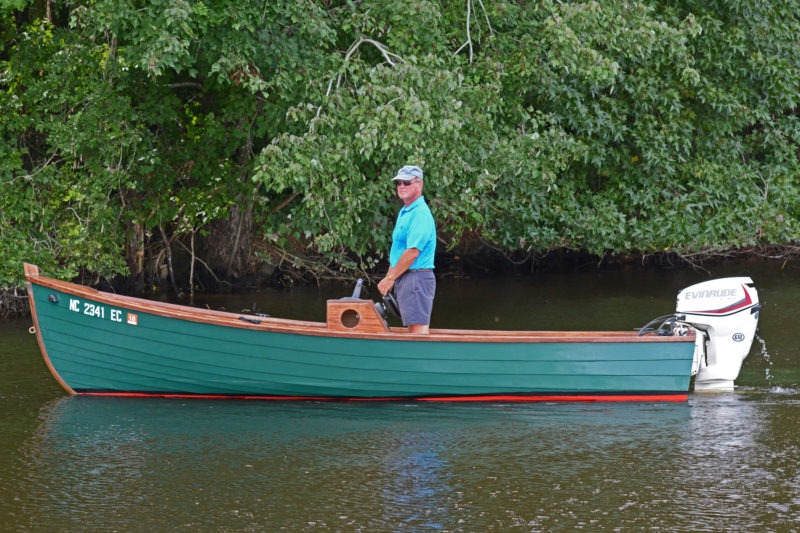
James’s lapstrake version of the skiff made it lighter and easier to maintain than the carvel originals.
James got Tom’s plans and set out to build his own version of the Jericho skiff in lapstrake plywood. The modifications he had to make to the hull shape were minor, and his skiff OSPREY is as true as possible to the original form as he could make it. That includes the slightly concave profile of the bottom aft of amidships. The unusual reverse curve there was drawn by White to serve the same purpose as trim-tabs do: bringing the bow down as the boat gets on a plane and holding it there while at speed. James used yellow pine for the keelson and red oak for the keel, knees, breasthook, seats, and console. He laminated ash for the stem and two layers of 3/4″ marine plywood with a 6mm layer of meranti plywood for the transom.
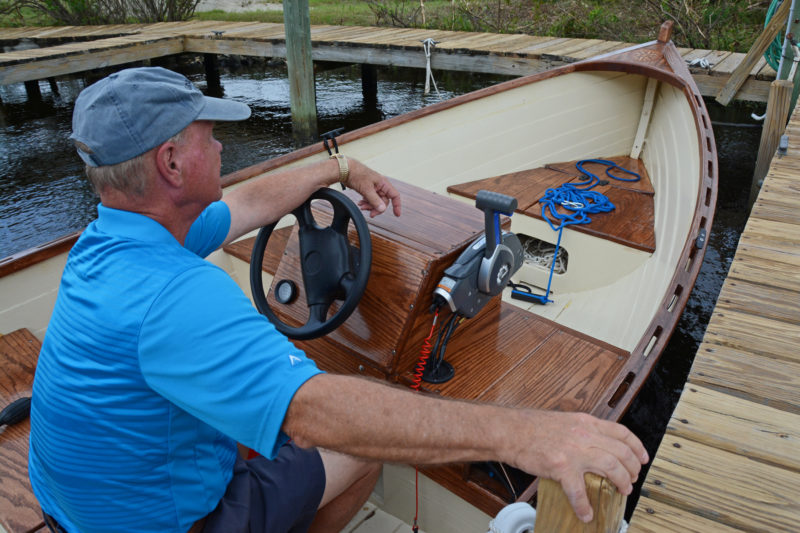
James made some slight modifications the the console, but kept the location as it was in the original, with the helmsman’s weight close to amidships for optimum trim.
James confesses that he’s not much of a painter, but he did well with the finishwork on OSPREY. He took extra time and care sanding between coats of paint and on the advice from the folks at Interlux, used their 333 Brushing Liquid to keep the surface damp as he applied fresh coats of paint. “It came out looking almost as good as a spray job. I was very pleased.”
OSPREY is powered with an Evinrude E-TEC 30-hp outboard equipped with remote steering and electric trim and tilt. With the throttle wide open, the Evinrude gets OSPREY up to around 30 mph by James’s estimation—keeping the boat simple, he chose not to install a knotmeter. He reports “the ‘hogged’ bottom does a good job in getting the boat up on plane rapidly from the start. At top speed, however, with just me aboard, the boat has tendency to porpoise, so I use about 90 percent power to cruise. With another person in the boat, seated in front of the steering station, there is no porpoising. With a lighter 20-hp motor, that would also cease to be an issue.”
In a hard turn at 25 mph, OSPREY, he reports, “holds the water well and doesn’t side-slip.” The skiff takes on chop with aplomb. Being caught out on open water by a 20-mph northerly would have made for a wet ride in his other boats, but not in a Jericho skiff. “North Carolina rivers,” James notes, “are famous for getting into a hard chop quickly with this much wind.” OSPREY took on several miles of chop very well and stayed virtually dry even when taking a course at an angle to the wind.
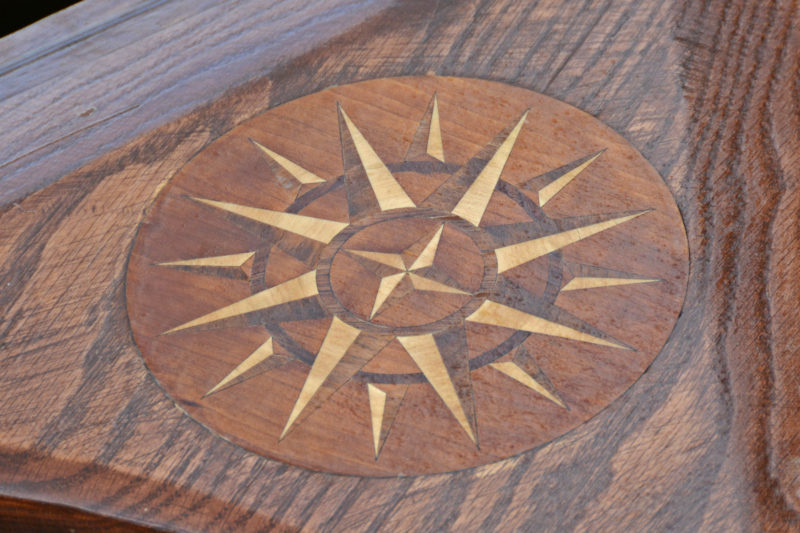
A bit of inlay in the breasthook dresses up an otherwise utilitarian skiff.
Whenever James takes OSPREY out, it draws a once-over from almost every other boater who sees it and many ask where he got the boat. James gets the pleasure of replying: “I built it myself.”![]()
Have you recently launched a boat? Please email us. We’d like to hear about it and share your story with other Small Boats Monthly readers.
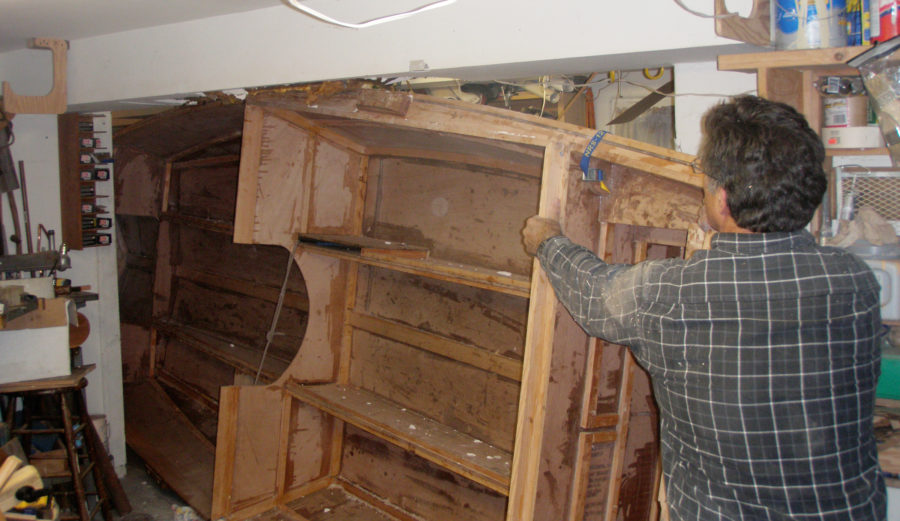
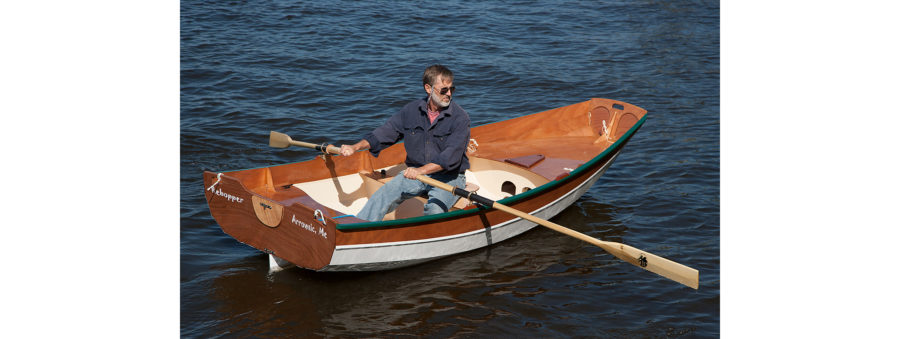
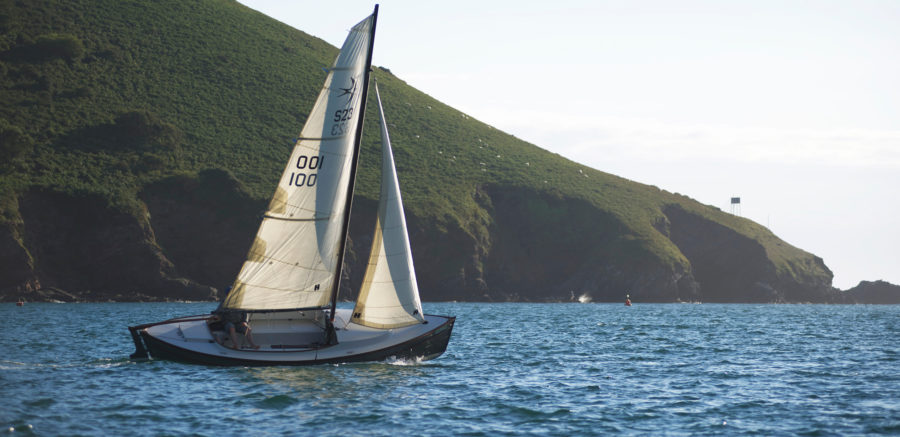
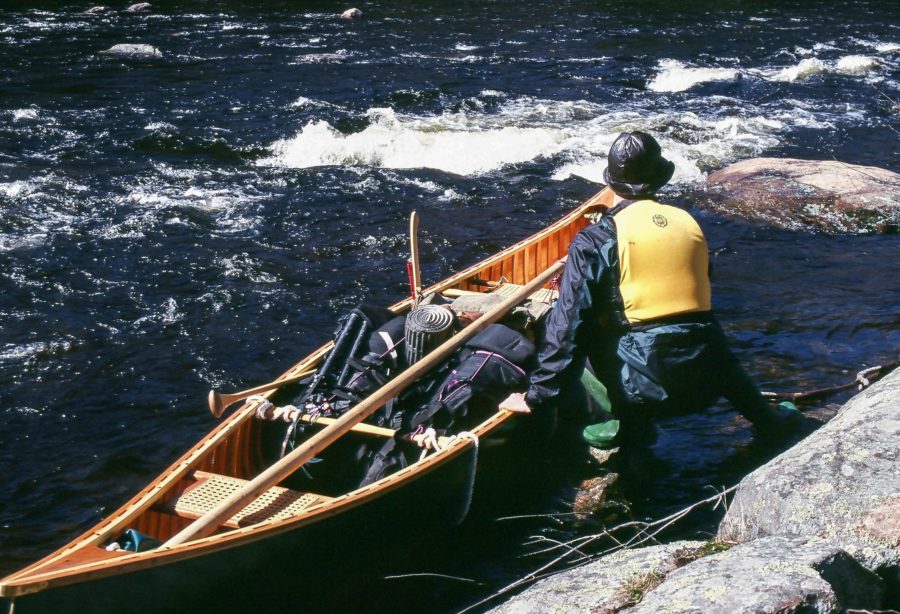
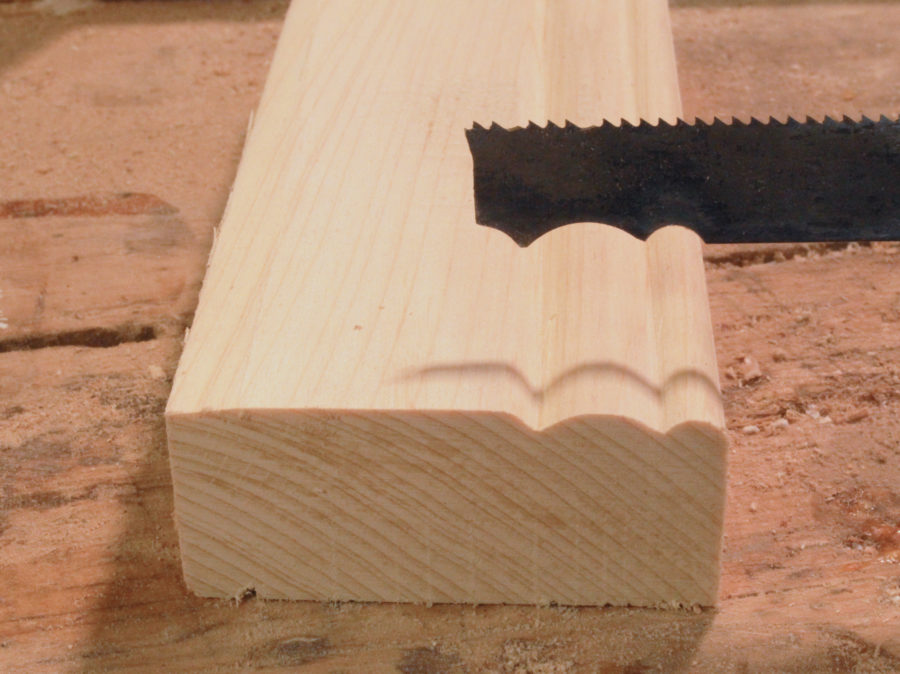
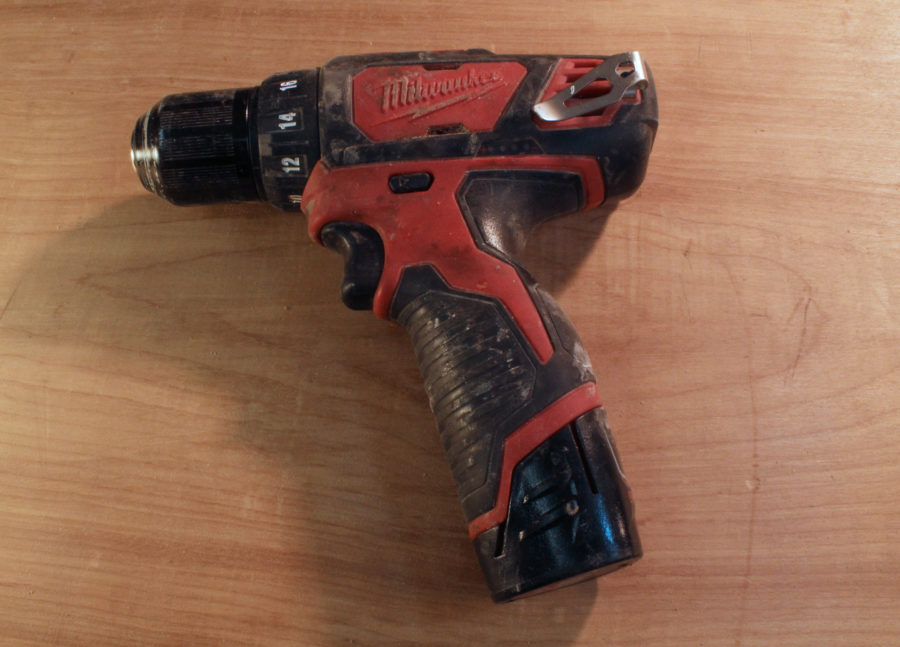
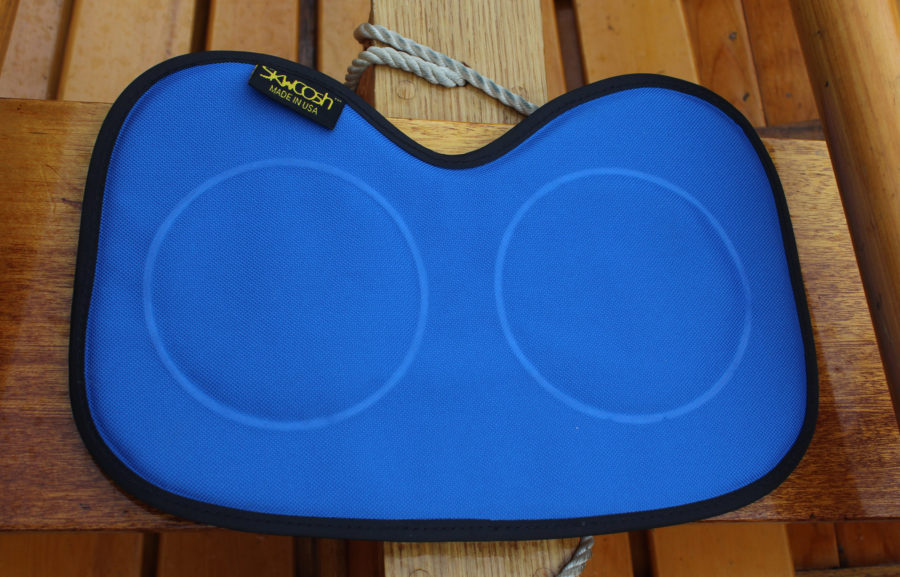
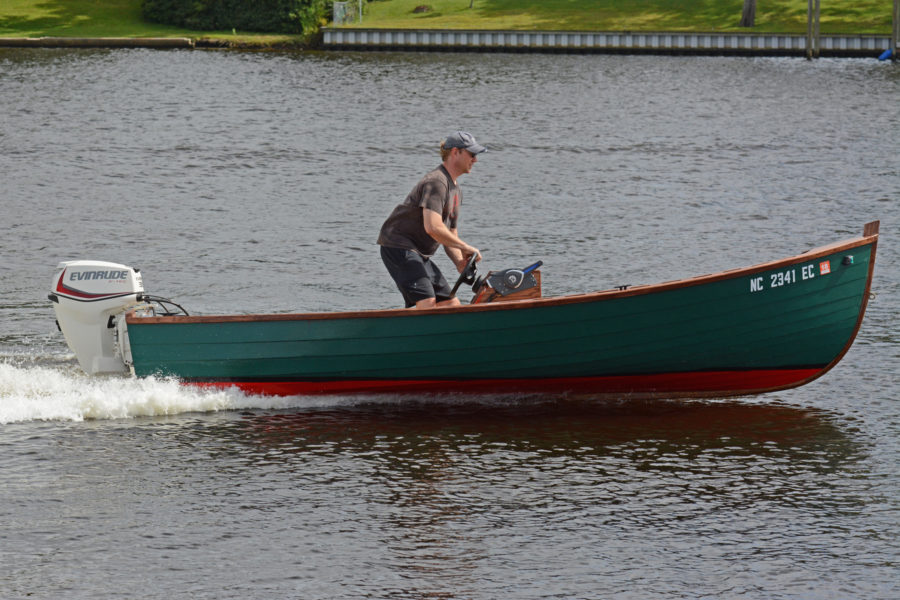
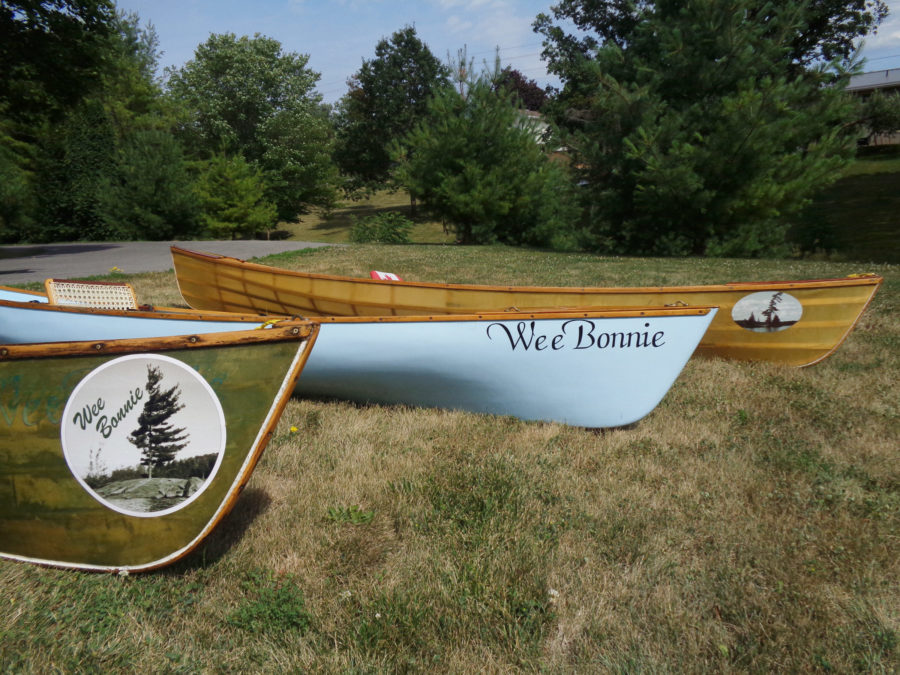
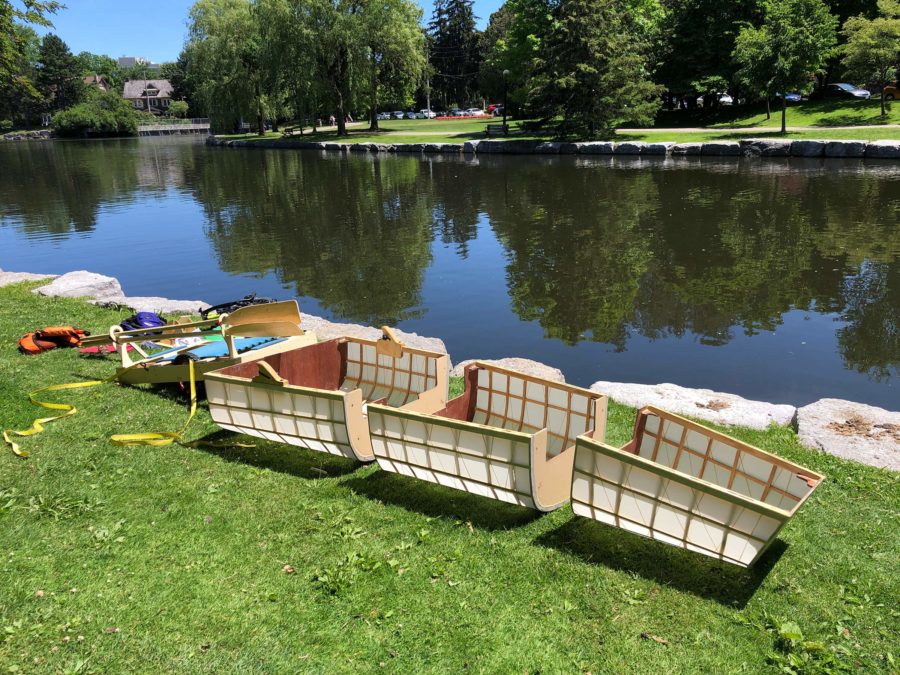
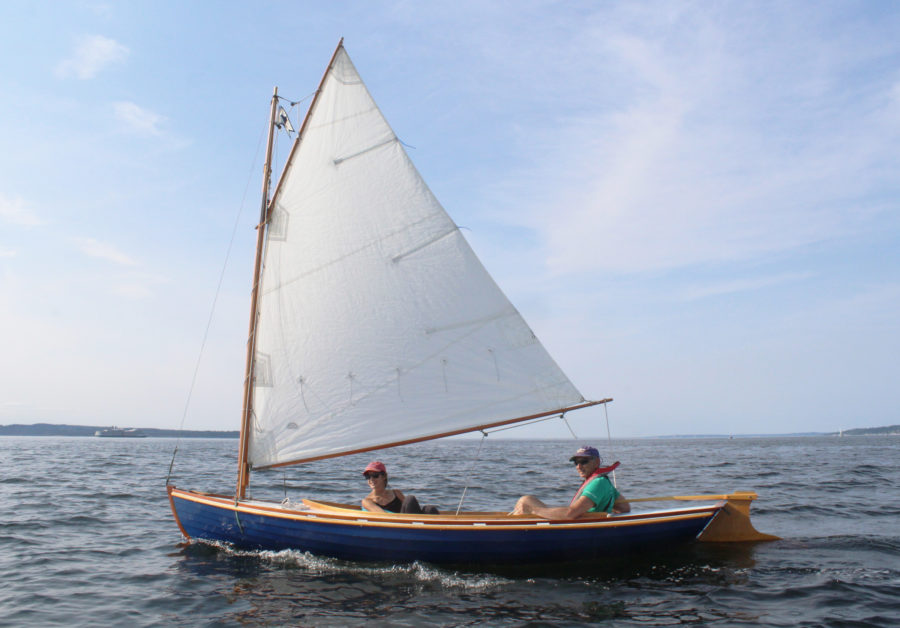
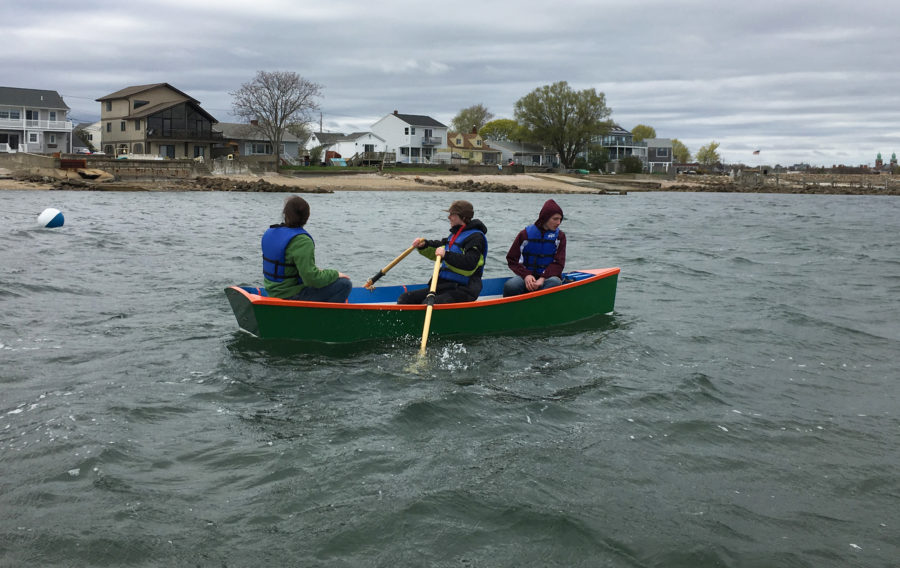
Congratulations on a truly well-built boat and done in lapstrake no less. I imagine that it took considerable skill to get those planks to make their way around the round bilge and sweeping bow. The planking job looks great. How is it fiberglassed?
I built the strip-planked version of the Jericho Bay Skiff with a Tohatsu 20-hp. I started with a tiller configuration and soon upgraded to a center console. The center console location gives me much more control of the boat and makes for better visibility. As you have experienced, the boat handles very well, even in rough conditions. I use it for runs along the Southern California coast, up to 55 nautical miles in a day. In the ocean I cruise at 10 to 12 knots and peak at 18 knots. I get wet some days but that’s part of the fun.
For the good readers out there who are considering a skiff, I have come to appreciate the 15.5′ length. I built it in the single stall of a garage and store it on a trailer in that same stall. I like big boats but I will be using a small boat well into my old age.
In response to Dave’s comment, first of all thanks for the praise. You were correct that getting the laps around the transition from the bottom aft section to the tumblehome was difficult. As you can see in the front along the water line the strakes are much thinner. I originally planned 10 strakes but had to add an additional narrow strake to make it work. I also had to reinforce the inside of the same strake with a batten glued in place to be sure the overlap would be sufficient to stay together in rough water.
I fiberglassed the outside of each plank and the edge of the plank overlapping it (on the sheer side), rather than it’s own edge (on the keel side). The fiberglass folded easily into the inside corner between planks, sealing the seam there as well as the edge of the upper plank. I tried working the other direction, ‘glassing the plank and it’s on keel-side edge, but I could not get the cloth to stay down when I tried to fold it around that outside corner.
Billy Atkin used the hogged keel in many of his designs intended for moderate planing speeds. Though he rarely commented on it, I assume he found it worked out well because he continued drawing that configuration over a span of many years and designs.
Also, Weston Farmer designed a 19 footer called “Trumpet” that used the same feature. He called it “empanage,” which he said was a French engineering term. That boat was also lapstrake, though not glued plywood. It was a quite heavily built boat, with sawn frames. He specifically designed it to use the 40-hp motors that were coming on the scene about that time.
You did a beautiful job on the boat!
Thanks for the “Thatta boy.” Just a comment on the hogged hull: When I first saw the plans it was not easy to see, but when I set the jig up, it was the hogged section was clearly present. I was pleased to see it because some years ago, in 1970, I was friends with Johnny Midgett, an 80-year-old fisherman from Swansboro, North Carolina. Johnny was a local fisherman and he and other local fishermen built skiffs for their own use as they needed them. There was no particular name associated with the workboats of that type. When I built my first Carolina skiff, the bottom started out flat, but Johnny told me that when it came time to put on the sides of the boat, I should put some pressure on the frame in such a way to place a “hog” in the bottom’s aft half. The flat-bottom skiffs Johnny built in the ’30s, ’40s, and ’50s were always in demand because they ran so flat in comparison to the other builders’ boats. For planking he used cypress, the wood of choice here in Eastern NC. After the boat was planked it had to be soaked in water to seal the seams and keep the boat from leaking.
When we were measuring Beals Island (Maine) lobster boats we found that some had a tiny hook in the bottom aft, so small that it was hard to measure. In talking to builders, they said it was put in to help keep the bow trimmed down at speed. Makes sense.
Is this boat big enough to be rigged with the outboard mounted inboard—forward of the transom—like Doug Hylan’s “Bagatelle”? Or even better, an electric inboard?
I built an 18′ Simmons sea skiff, which actually measured out to be about 17.5′ long. The original design was for hauling fishing nets out into the surf to catch mullet in the Wilmington area of eastern North Carolina. I found that the inside well for the outboard took up about three feet of working space. It worked out that the outboard design of the Lobster skiff has as much working room at 15.6′ than the bigger Simmons. The Simmons handled more like a shorter boat. In answer to your question, yes you can put in a outboard well but there is always a trade-off.
Gents, great job and well done! I am interested in building a Jericho Bay skiff but will need to leave it in the water. From what I have been told this is not a self-bailing hull. Is there any way this could be done?
It depends on how much work you want to do in fitting and installing a sealed cockpit sole above the water line. When I leave the boat in the water—for just a few days at most—I install an automatic bilge pump.
Owned a 13.5′ Lyman lapstrake hull back in the late 60s. It too had a hogged hull. I am pretty sure that the hogging was due to poor support while storing by the previous owner. Had 20-hp Merc on it. The problem was it ran so flat at speed that a little wave would form in front of the stem. As the wave curled forward, the wind would blow the spray back up over the bow and into the operator’s (my) face. Didn’t know much about fixing boats so I epoxied some strips to each affected plank, planed the bottom of the boat level, and fiberglassed the whole bottom. After that it ran fine without the spray.
Beautiful boat. Did you develop plans of your own beyond Tom Hill’s, and would you be willing to sell them?
That is a gorgeous boat! I love the lapstrake look and everything else about it. Great job. Enjoy!